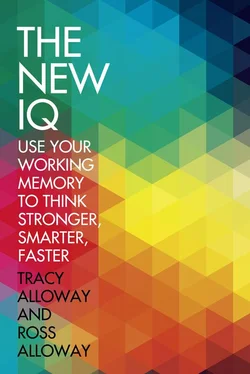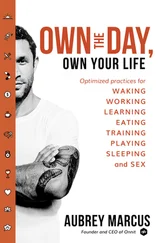Bill Gates turns and looks directly at you. “Mark, will this give our tablet an edge?”
It is at this moment that you realize Gates mistakenly thinks you are the product manager. Your amygdala, the emotional heart of your brain, surges with terror. You can correct him, but then you know your career won’t go anywhere. Or you can go with the flow and see where it leads. The Conductor takes over, and you decide to take a risk. Because you don’t know much about the FeelPad’s technology, you have to work with what you have just heard and cobble together an answer that combines the key features of the technology and how you think it will fit into the marketplace.
“Well,” you say, “I think that the brand recognition of the iPad 700 is so formidable that it will mean considerable financial investment to make a dent in Apple’s sales, but if the FeelPad can really make projections come to life, we may have a real iPad killer on our hands.”
“Great,” says Bill. “Apple wants to look at the technology too, and the inventor is giving us one day to make an offer. You have ten minutes to decide if we need to buy it.”
Ten minutes? You go back to your cubicle to formulate a plan. That isn’t enough time to come up with a detailed proposal, but it is enough time to assemble the most important technological information, market analyses, programming issues, and budget projections. Shutting out the ringing phone, the blinking email notice, and the low-level chatter, you modify a product launch plan with which you are already familiar and show that with the right software and viral marketing programs, the FeelPad can crush the iPad 700. Bill likes your plan so much that he makes you the project manager, and within a year, the FeelPad single-handedly turns around Microsoft’s fortunes and you are promoted to vice president of new product development. Congratulations!
This remarkable change of fortune is a consequence of your Conductor working at optimum levels. It allowed you to pull out relevant information that you already knew, like product launch plans, and allowed you to synthesize it with the potential requirements of the new device. It also kept you on task and blocked distracting information, such as the ringing phone, the office chatter, and the surging fear that you may blow this opportunity. It allowed you to keep in mind the hardware, software, and finance data. It also allowed you to hold on to the information long enough to structure your plan.
What Working Memory Helps You Do in Your Daily Life
Working memory gives you the advantage of managing information in your day-to-day life from the time you’re born until your golden years. Here is a quick preview of just a few of the many ways it helps you. We will explore many of these in much greater detail throughout the book.
A strong working memory helps you manage the stream of emails, texts, Facebook status updates, Tweets, and phone messages pouring into your life. Your Conductor allows you to process and prioritize all those data so you can quickly respond to the most important things first, make a mental note to deal with some things later, and efficiently shuffle the junk to the trash.
Focus on the Important Stuff
Life is filled with disruptions, and working memory helps us pay attention to what really matters. Torkel Klingberg of the Karolinska Institute in Sweden found that one of the important features of working memory is to selectively filter out distractions so we can focus on relevant information. For example, as we were putting the final touches on this book, we had a small electrical fire, our car died and had to be towed away, our refrigerator threw in the towel (resulting in mild food poisoning), and our babysitter had to take the entire week off due to a family emergency, leaving us with two rambunctious boys clamoring for our attention when we were supposed to be working. Working memory helped us deal with the emergencies, create a schedule to watch our sons, and then quickly shift our attention back to the book so we could finish and click the send button in time to meet our deadline.
You’ve got an interview for your dream sales job, and you are totally prepared for it—you’ve researched the firm, its clients, its competition, and its sales strategies. But the interviewer throws you for a loop with a wacky question out of the middle of nowhere: “You’re meeting a client in an industrial estate with a gated parking lot. Where do you park?” “Huh?” You hesitate, then your working memory digs into your recent memory vault to recall that the interviewer had pointed to her car—backed into the parking space next to the exit gate—during your interview, and you quickly figure that where she parks is where she would want you to park, so you say, “I’d park right next to the exit.” Ding, ding, ding! You get the job.
Your Conductor helps you zero in on the most essential information when weighing the pros and cons of any potentially risky venture and helps keep you from blindly going with the flow or following the crowd. For example, when that Facebook initial public offering you invested in takes an immediate nosedive, it’s your working memory that helps you decide whether to dump your stock or hold on to it.
Learn More Easily in School
Kids use their Conductor every time they set foot in the classroom. It helps them to inhibit distracting information—like their classmates whispering near them—and to keep track of where they are in multistep tasks. It also allows them to access all the information they need, such as numbers or words, to complete an assignment. And, it lets them hold that information in mind and complete the tasks as quickly as possible.
Making quick decisions about your likes and dislikes, as well as how to act in certain situations, is a working-memory-intensive task. It may come as a surprise that even judging attractiveness relies heavily on working memory. When you spot someone across a bar, your working memory riffles through your hippocampus Rolodex for previous references of beautiful people. Then your working memory allows you to hold this information in mind while you compare the new person with the mental image and make a decision: Hot or not? The same process occurs as you decide whether you like a horror movie. Does the monster on screen measure up to the others stored in your hippocampus?
As far as actions go, your working memory is in control. If you get into a car accident and the other driver jumps out of his car and starts coming toward you in an aggressive manner, your working memory helps you quickly run through various scenarios to determine whether it’s better for you to get out of the car or lock your door and call 911.
Have you ever wondered why some people who get laid off, divorced, or move across the country for a job transfer manage to land on their feet and thrive while others struggle to find their way? A strong working memory is the key to being able to switch gears and reinvent your career, jump back into the dating pool after years of marriage, or create a new life in a new home. Why? Because the working memory Conductor allows you to shift smoothly from thought to thought, to look at the world in a different way, and to think about old information in novel ways.
Stay Motivated to Achieve Long-Term Goals
Читать дальше












